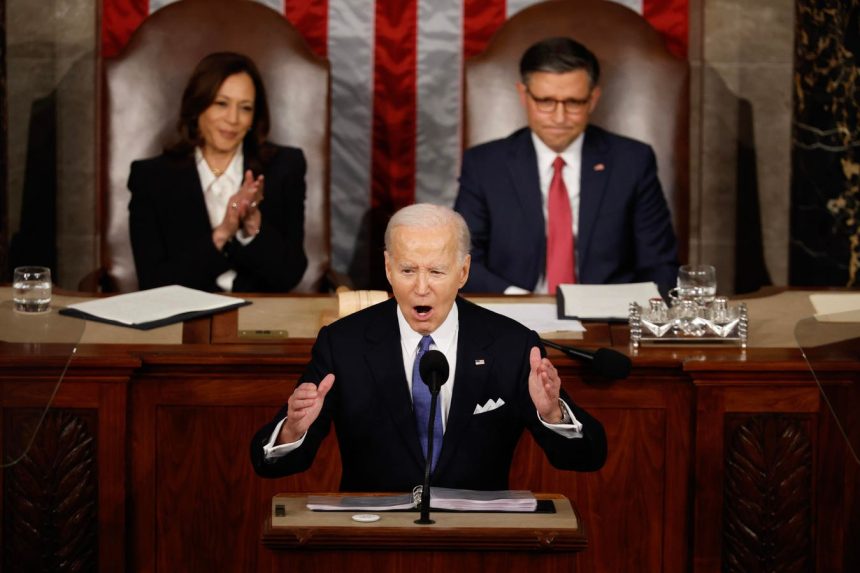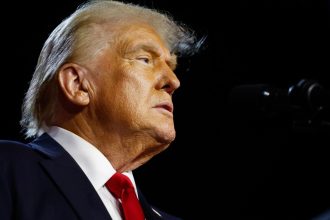Last night’s State of the Union address probably was President Biden’s last first-term speech to Congress. But it also was his first big-stage re-election campaign event. And when it came to tax policy, Biden sent a clear message: His second-term revenue agenda, like his first, would be defined by efforts to raise levies on corporations and the wealthy while lowering taxes on many households making $400,000 annually or less.
Biden’s almost certain opponent, Donald Trump, has been vague about his own fiscal agenda. But Biden is sure to spend the next seven months drawing a contrast with the former president by repeating the message he delivered last night: “Does anybody really think the tax code is fair? Do you really think the wealthy and big corporations need another $2 trillion in tax breaks?”
Biden’s Tax Agenda
Many of the proposals Biden described last night or that were included in an accompanying fact sheet were familiar. They either reprised or expanded many of his first-term tax initiatives.
Biden said he would:
· Raise the corporate tax rate from 21 percent to 28 percent and the corporate minimum tax rate to 21 percent.
· Implement the international agreement to set a worldwide 21 percent corporate minimum tax.
· Raise the excise tax on corporate stock buybacks from 1 percent to 4 percent.
· Expand the current $1 million cap on deductible executive compensation to all employees.
· Increase taxes on corporate jets.
· Impose a 25 percent individual minimum tax on households with wealth of $100 million-plus.
· Raise the Medicare payroll tax rate on those with wages of $400,000 or more.
· Restore the more generous 2021 version of the Child Tax Credit and increase the Earned Income Tax Credit.
· Extend the individual tax provisions of the 2017 Tax Cuts and Jobs Act (TCJA) for those making $400,000 or less and pay for the effort by raising taxes on high-income households and corporations.
· Create a first-time homebuyers tax credit.
· Extend IRS budget increases Congress enacted in 2022.
It will be difficult for Biden to contrast his tax agenda with Trump’s, since the former president has been largely unwilling to flesh out his own ideas. Early in his primary campaign, Trump talked about making deeper cuts in the corporate tax rate and new tariffs on imported goods, sometimes singling out China.
Making A Contrast
More recently, he has downplayed the corporate rate cut and focused instead on making the TCJA permanent. But to the degree Trump campaigns on policy at all, he is more likely to focus on immigration and crime than on taxes.
That means Biden will have to contrast his tax agenda with that of congressional Republicans as much as Trump. Still, there are some stark contrasts between the current and former presidents when it comes to taxes.
Trump favors a 15 percent corporate tax rate. Biden favors 28 percent. Biden wants the US engaged in international tax reform. Trump does not.
Trump wants to make all provisions of the TCJA permanent and has been silent about making up the projected revenue loss of more than $3 trillion. Biden would extend individual provisions of the TCJA only for those making $400,000 or less. And would finance that effort, at least in part.
Ideas Dropped
While Biden reprised many ideas he’s espoused in the past, he ignored some past proposals, at least this week. For example, he never mentioned taxing accrued capital gains even if investors have not sold assets. Nor did he discuss taxing capital gains on unsold assets at death, which would make it harder to avoid tax on investment profits made over a decedent’s lifetime. It is not clear whether any of these ideas will appear in his more detailed budget due next week.
Finally, Biden was silent on past plans to extend the solvency of Social Security, an effort that would require payroll tax increases on workers. Instead, he said what he wouldn’t do, including raising the retirement age.
A Political Message
Some of Biden’s proposals may be more effective as a political message than as a tool to raise revenue.
For example, the current 1 percent tax on stock buybacks has had little impact on corporate stock repurchases and while 4 percent levy may discourage some buybacks, most doubt it would change behavior much. In a forthcoming analysis, TPC estimates that in the absence of any excise tax, the US tax advantage for buybacks over dividends is 7.2 percent. About two-thirds of the total US tax advantage is attributable to foreign shareholders.
Similarly, capping corporate tax deductions for non-executive employee compensation is unlikely to change pay practices. For one thing, the new tax would apply only to publicly traded C corporations. But many highly paid employees, such as doctors, lawyers, financiers, and athletes are at firms with other business structures such as partnerships, S corporations, and limited liability corporations.
While Boden’s tax platform technically was a preview of his fiscal 2025 budget, in an election year a deeply divided Congress is unlikely to pass any of these changes. But while Biden spoke to lawmakers, they were not really his audience. 2024 voters were.
Read the full article here














